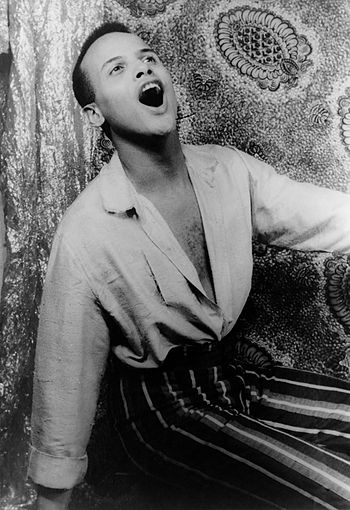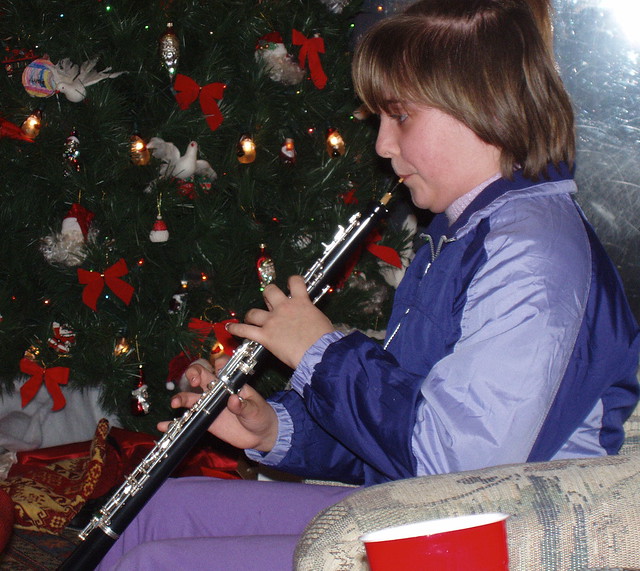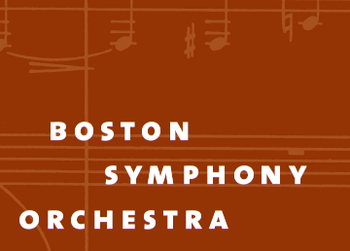 |
| Portrait of Harry Belafonte, singing, 1954 Feb. 18. (Photo credit: Wikipedia) |
Need a little help to improve your singing voice? Here are 10 tips to help you reach your potential!
1. Breath from the diaphragm, not the lungs. You need to really control the air that you're expelling when you sing, and breathing from the diaphragm gives you more air to work with. To do this, breathe so that your stomach goes out rather than your chest when you inhale. When you practice, try to focus on using the same amount of air for low notes and high notes. This will help erase the break between your registers and give you more steady tone.
2. Run through scales-a lot. If this was guitar, it wouldn't be different, and the human voice is a lot less accurate than a guitar. You need to get your sense of pitch down, and you need to train your voice to reach higher and higher if you want to really hit all the notes in your range.
3. Don't strain your voice. Practice is a good thing, but don't try to sing too high or you might damage your vocal cords. Go slow and steady and you'll sing well in no time. Keep your practice time to an hour or so a day, then move up if you feel like it. If you ever feel like your voice is straining, or if you feel soreness or pain, stop right away.
4. Listen to criticism. Singing well takes a long time, and in the meantime, you're going to hear people say a lot of bad things about you. If you notice a trend, recognize that people are probably making a good judgment and try to work on the problem aspect of your voice. Don't let anyone get you down who really has nothing to say other than, "you suck," though. You don't see them trying to do this, and they have no idea what they're talking about.
5. Make recordings of yourself. This is the only way to hear your problems because you can separate yourself from your voice and listen to what other people hear. You may not like this at first, but keep at it; you'll improve vastly, and you'll start to notice stuff you like about your voice and really expand on those things.
6. Talk to established singers. Most of them will be happy to give you some tips and exercises that helped them out, and any time you need to ask for directions, the best idea is to ask the person that's already at your destination.
7. Eat and drink well. Don't do anything that'll dry out your voice and stop you from singing well. Caffeine is bad, as is anything that causes mucous buildup like dairy products (milk, in particular, is a very bad choice). Don't smoke or drink too much; this can really make you sing poorly. One famous case of booze and cigarettes ruining a classic voice is Harry Nilsson, who shred his vocal cords while working on his "Pussycats" album with John Lennon and ended up carrying a bucket with him to spit blood into during the recording session. His fantastic voice eventually improved and sounded great, but he never could sing quite as well again; his highest register was permanently damaged.
8. Sing for the style. If you're singing country, listen to country singers; if you're singing rock, listen to rock singers. Notice things that are the same in each style and emulate those. Be careful, however, to keep your voice unique, and not to simply copy another singer's voice. Make your personality come out in your music.
9. Experiment with different sounds. Certain noises, like a really nasal note, can help you expand your range if you practice with them. Ask singers for their suggestions, and take them up on it.
10. Finally, stay positive! If you've had a few bad scales, that doesn't mean your voice is going to be bad all day. Drink some warm tea and try again. Don't get down on yourself, and don't think that your voice is bad, or it certainly will be. I know how stupid that sounds, but the mindset is definitely a big part of singing, and if you don't think you sound good, neither will anyone else.
If you are a social singer or someone looking for a career using their voice you can benefit from a little training. Online learn to sing software is not better than ever and can help you get started right away! Click below to find out what is available and what suits your needs best!
|
















